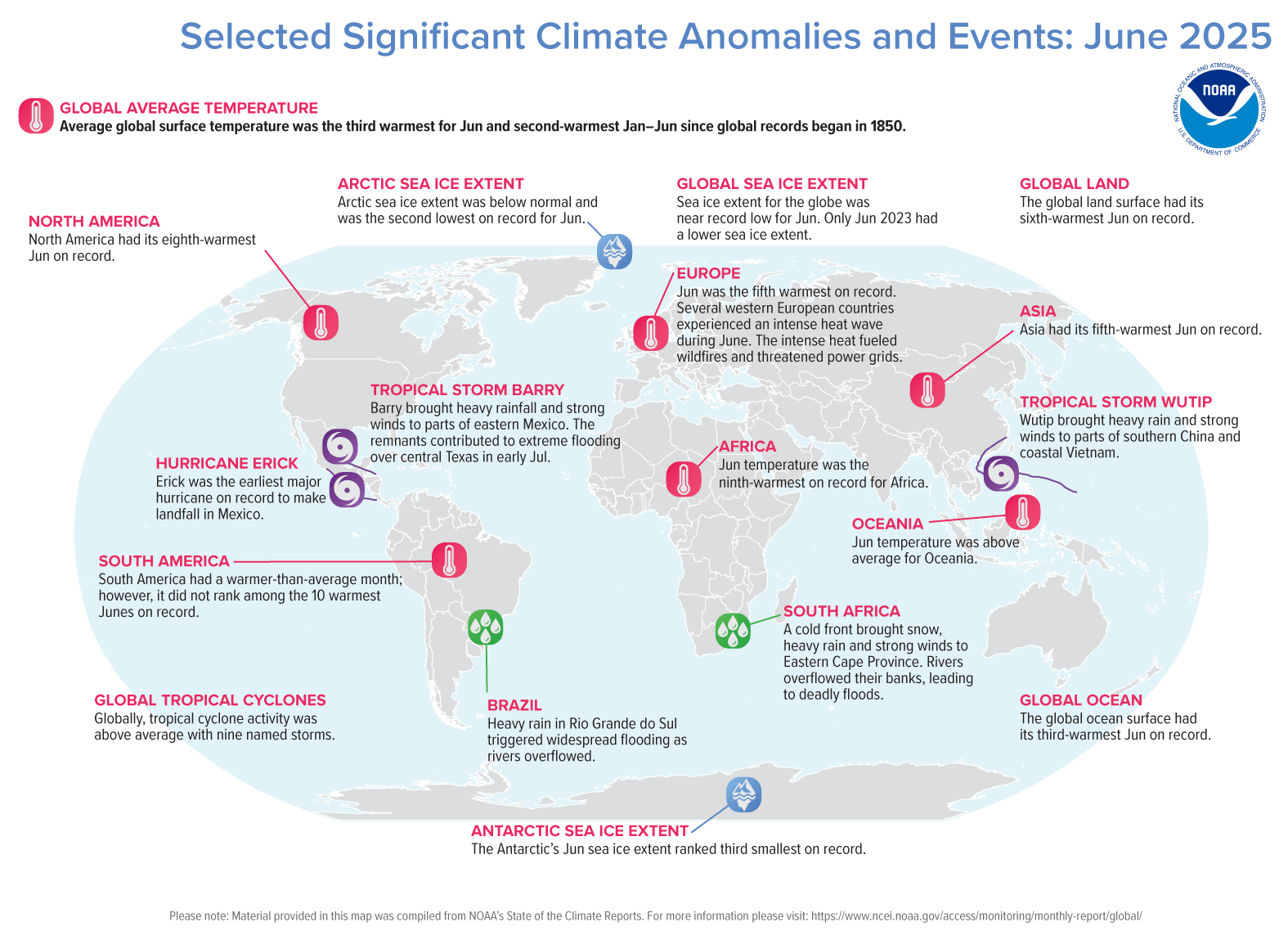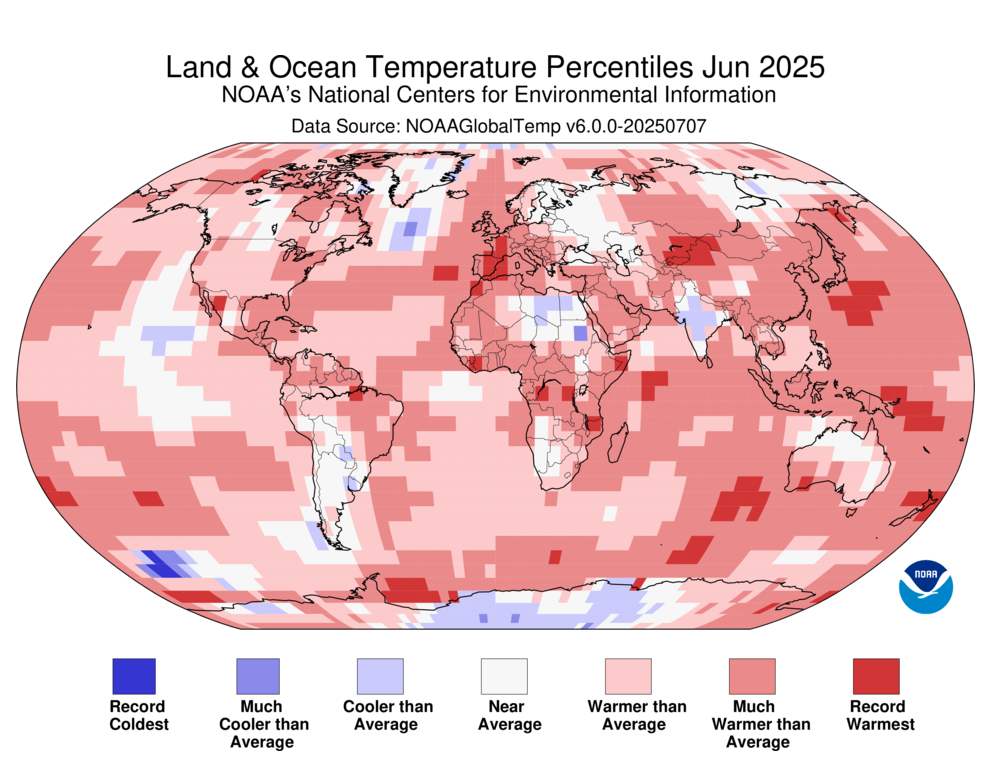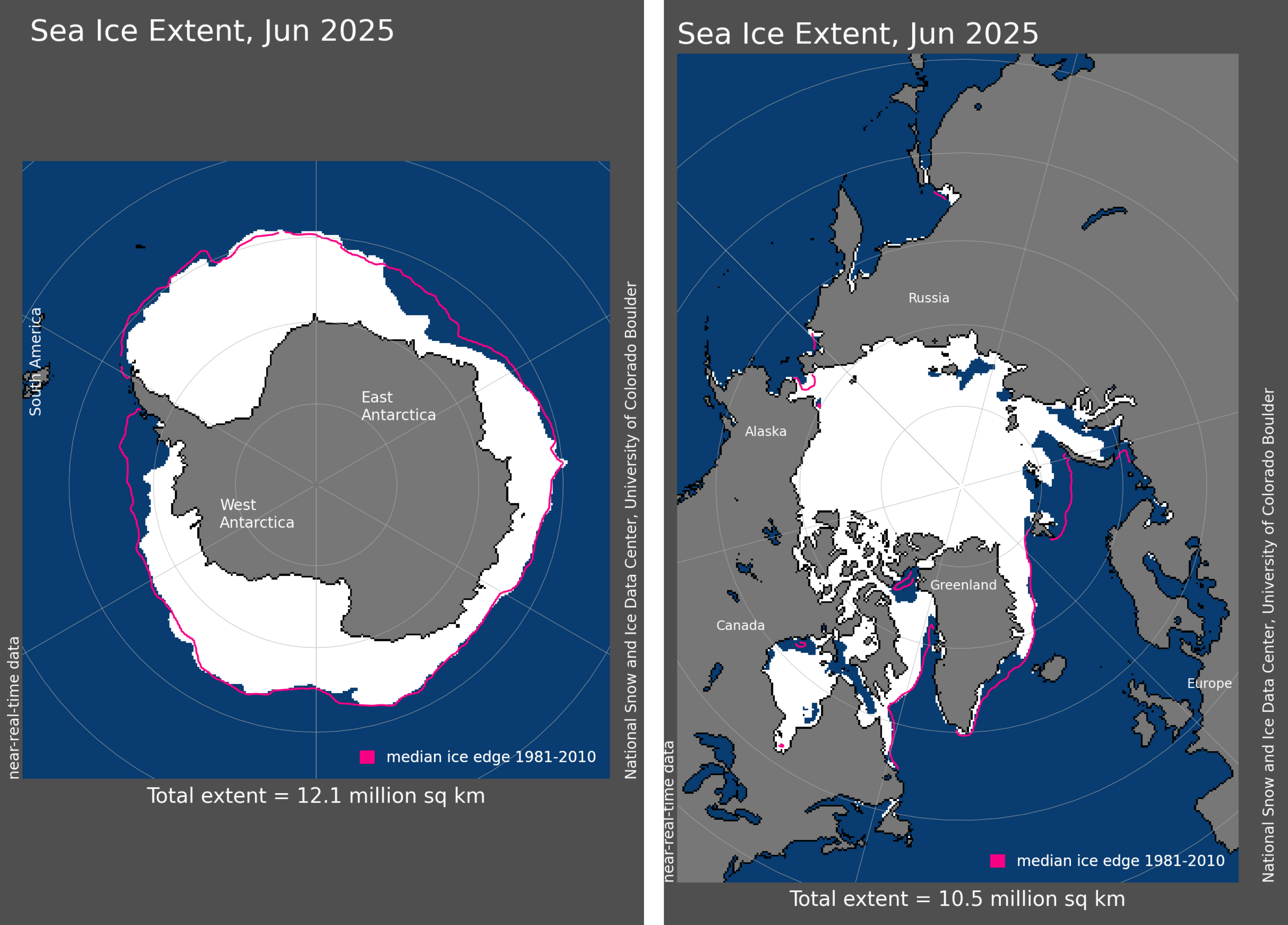Assessing The Global Climate In June 2025
Widespread warmth across most of the globe; above-average global tropical cyclone activity
June Highlights:
- June saw widespread warmer-than-normal temperatures across most of the globe.
- Northern Hemisphere snow cover extent was below average in June.
- Sea ice extent was near-record low for the Arctic and third lowest for the Antarctic.
- Global tropical cyclone activity was above average with nine named storms.

Temperature
June 2025 had the third-warmest June global surface temperature in NOAA’s 176-year record, with a temperature 1.76°F (0.98°C) higher than the 20th-century baseline. This June was cooler than June 2023 (second warmest) and June 2024 (warmest). According to NCEI’s Global Annual Temperature Outlook, there is a very high likelihood that 2025 will rank among the five warmest years on record. However, it is unlikely that 2025 will rank as the warmest year on record.

June saw widespread above-average temperatures across much of the globe’s surface. Warm temperature departures were most notable in parts of North America, Europe, central Asia, western and eastern Antarctica and the northern Pacific Ocean. Pockets of below-average temperatures were present across parts of the higher latitudes of the Arctic, Greenland and the North Atlantic, as well as parts of northwestern and northern Asia, India, north and eastern Australia, southern South America, central Antarctica and the eastern tropical Pacific Ocean.
Regionally, Europe and Asia both had their fifth-warmest June on record. North America had its eighth-warmest and Africa its ninth-warmest. South America, Oceania, the Arctic, the Antarctic and the Caribbean and Hawaiian regions also recorded above-average temperatures for June; however, their anomalies did not place among their respective top 10 warmest Junes on record.
Precipitation
As is typical, precipitation patterns varied globally. Regions that experienced drier-than-average conditions included parts of northern Canada and the western contiguous U.S., as well as the southern half of Europe, the central and western parts of Asia and southwestern and eastern Australia. Southern and western Alaska, the eastern half of the U.S., northern South America, northern Europe and much of Asia had wetter-than-average conditions.
Snow Cover
The Northern Hemisphere snow cover extent was the 12th-smallest June extent on record, with 610,000 square miles below average. Snow cover over North America and Greenland was below average by 280,000 square miles and was the 11th-smallest snow cover extent in the 59-year record. Eurasia was also below average by 330,000 square miles—tying with 2009 as the 13th-smallest June extent.
Sea Ice
Global sea ice extent was the second-smallest June extent on record at 850,000 square miles below the 1991–2020 average. Arctic sea ice extent was also the second-smallest extent at 320,000 square miles below average. The Antarctic sea ice extent was the third-smallest for June at 540,000 square miles below average.

Tropical Cyclones
Globally, tropical cyclone activity was above average during June, with a total of nine named storms. The Atlantic basin had two named storms: Tropical Storm (TS) Andrea and TS Barry. Notably, Barry brought heavy rain and strong winds to parts of eastern Mexico. Its remnants also contributed to extreme flooding over parts of central Texas in early July.
The East Pacific basin was more active, with five named storms: Hurricane Barbara, TS Cosme, TS Dahlia, Hurricane Erick and TS Flossie. Among these, Hurricane Erick stands out as the earliest major hurricane on record to make landfall in Mexico.
The West Pacific saw two named storms: Typhoon Wutip and TS Sepat. Wutip, an equivalent Category 1 typhoon, brought heavy rain and strong winds to southern China.
No tropical cyclones formed in the North Indian Ocean and the Southern Hemisphere basins.
For a more complete summary of climate conditions and events, see our June 2025 Global Climate Report or explore our Climate at a Glance Global Time Series.
Source: NOAA
